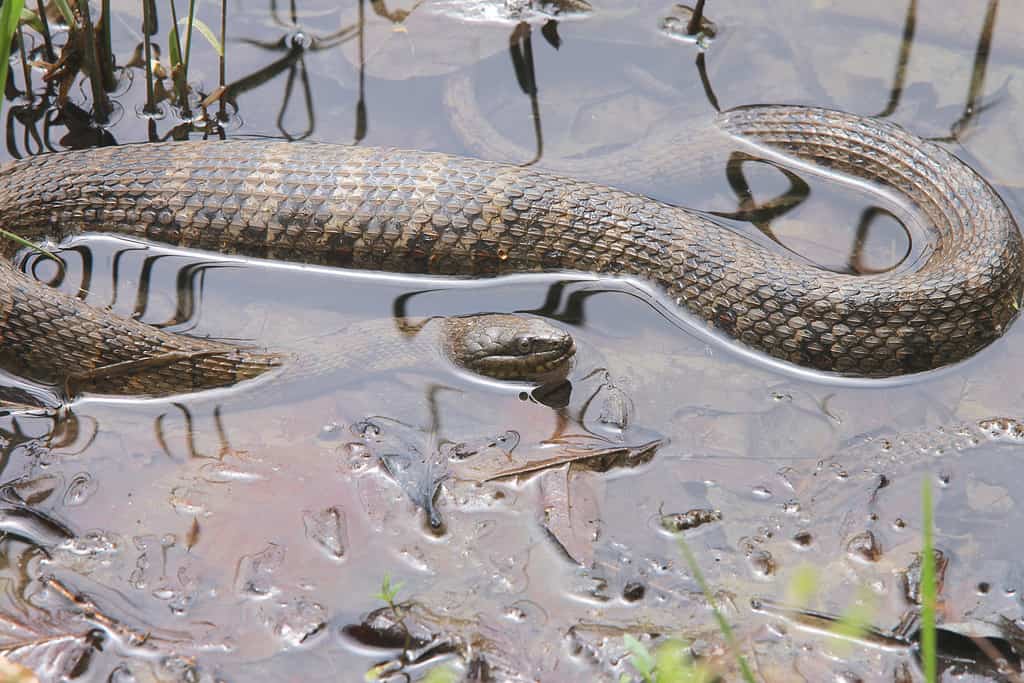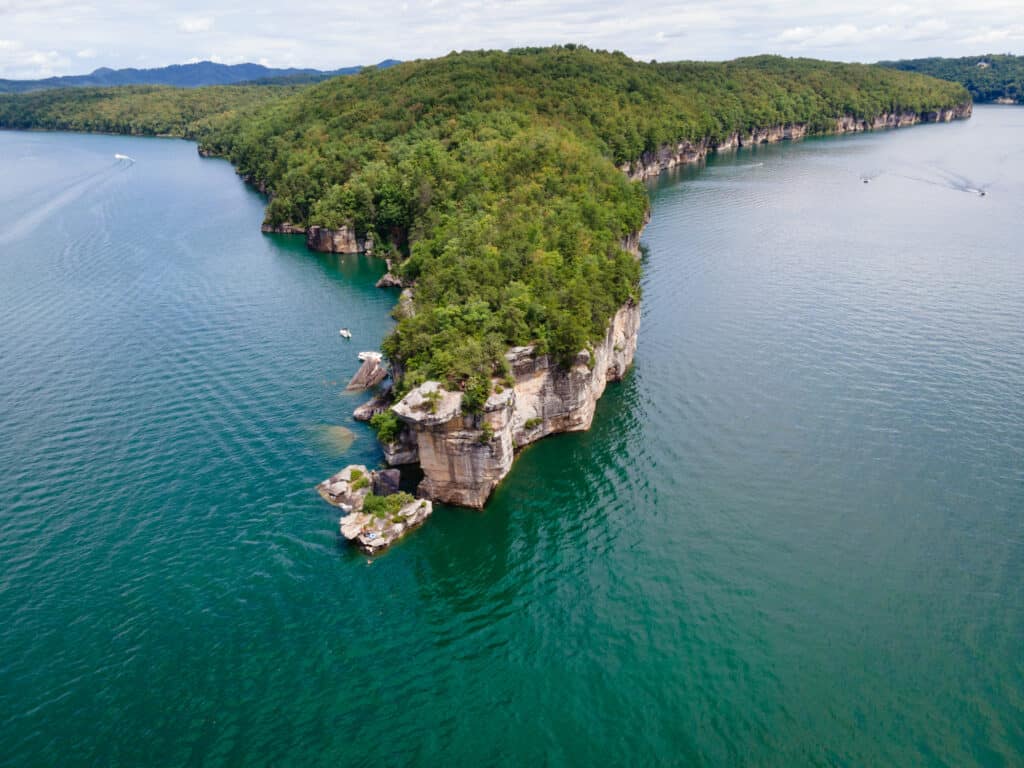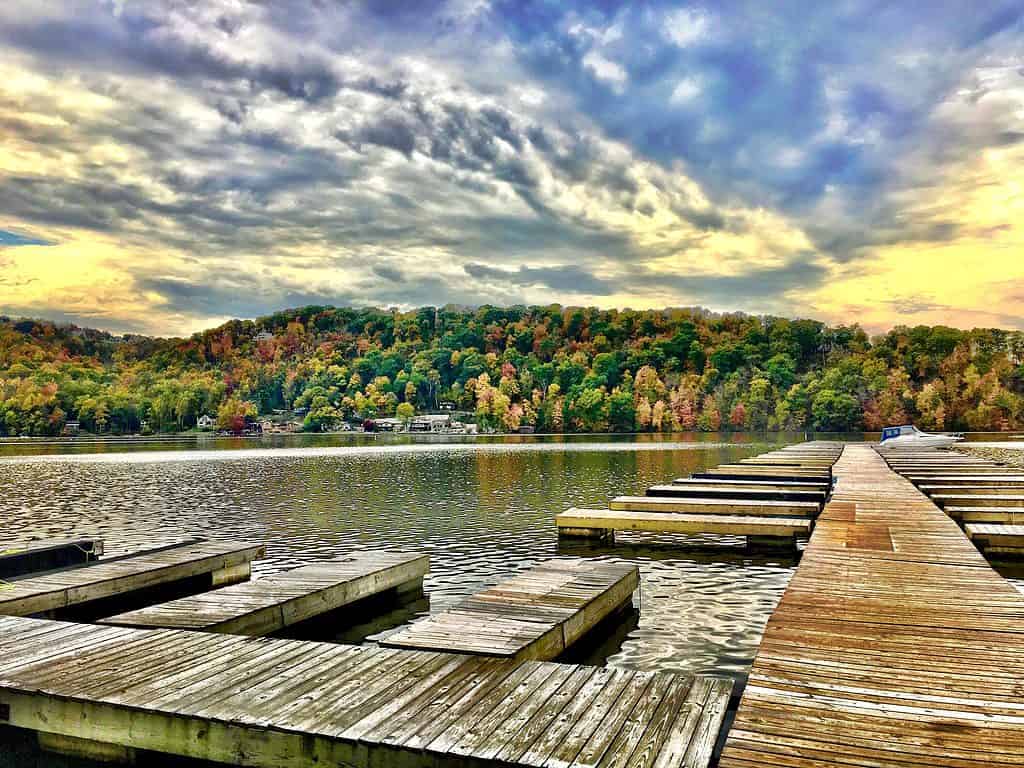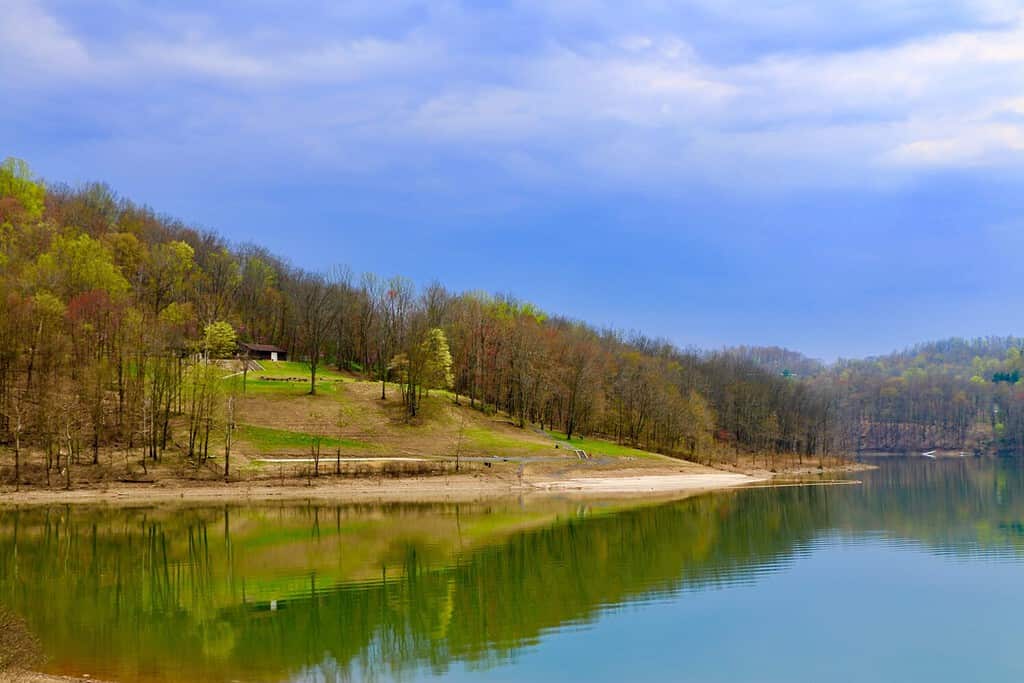Despite its small size, West Virginia is home to around 20 unique snake species! Fortunately, the vast majority are harmless to humans, with only two species being venomous. But what about the serpents swimming around in the Mountain State’s waters? Let’s take a look at the three most snake-infested lakes in West Virginia, what you should know about them, and the types of water snakes you might encounter while swimming or fishing in them.
Water Snakes Found in West Virginia Lakes

The common water snake,
Nerodia sipedon, is West Virginia’s only true water snake.
©iStock.com/NajaShots
While West Virginia’s snake population is quite robust, only one true water snake can be found in the entire state. Taxonomically, a water snake is any species within the Nerodia genus of colubrid snakes. Nerodia consists of nine total species of snakes, along with a handful of subspecies. All true water snakes are native to North America. Importantly, all of them are also non-venomous and harmless to humans.
As their common name implies, true water snakes are highly aquatic, skilled swimmers. They mainly feed on fish and aquatic invertebrates. Most are fairly heavy-bodied and average around four to six feet in length. Their patterning and coloration can vary, but all species have round pupils and somewhat flattened heads.
Notably, only one true water snake species resides in West Virginia: the common or northern water snake, Nerodia sipedon. Ranging from light brown to dark, grayish-brown in color, it has distinctive dark brown bands running down the length of its body. Like all other true water snakes, it is non-aggressive and quite fearful of humans.
However, several species of snakes that are technically not true water snakes also live in and near West Virginia’s waters. Many of these species are somewhat closely related to true water snakes and are similarly skilled swimmers. Thankfully, these species are also non-venomous and harmless. They include:
- Queen snake, Regina septemvittata
- Eastern garter snake, Thamnophis sirtalis sirtalis
- Eastern rat snake, Pantherophis alleghaniensis
- Eastern ribbon snake, Thamnophis saurita saurita
- Eastern milk snake, Lampropeltis triangulum triangulum
The only two venomous species of snakes living in West Virginia are the copperhead and the timber rattlesnake. Both varieties typically avoid water. However, they will occasionally swim to evade predators or other perceived threats.
West Virginia’s 3 Most Snake-Infested Lakes

Out of more than 50 or so named lakes in West Virginia, three stand out as being especially well-known for snake encounters. Below, we’ll take an in-depth look at all three, their history, and the types of snakes West Virginians have spotted while swimming or fishing in them.
1. Summersville Lake

Snake sightings have been common at Summersville Lake for several years, but its snakes are generally harmless to visitors.
©iStock.com/Eifel Kreutz
As West Virginia’s largest man-made lake, Summersville Lake boasts a healthy and diverse population of native fish, birds, mammals, and, yes, reptiles like snakes! Built in the mid-1960s to mitigate flooding along the Gauley and Kanawha Rivers, it covers around 2,700 acres of water and over 60 miles of shoreline in its entirety. It’s formed by the Summersville Dam, which also happens to be the second-largest rock-fill dam in the entire eastern United States.
While Summersville Lake is a popular recreational spot for native West Virginians and tourists alike, it’s also been known for snake sightings in more recent years. In particular, copperheads have frequented the lake and the nearby Gauley River National Recreation Area. However, as wildlife officials have noted, copperheads are not aggressive by nature toward humans and only strike if provoked. Furthermore, around a quarter of copperhead bites are “dry,” meaning no venom is injected.
Aside from copperheads, though, the majority of the lake’s native snake species are non-venomous and non-aggressive. Just be sure to not confuse a water snake for a copperhead, as the two share a similar coloration and banded pattern.
2. Cheat Lake

Coopers Rock State Forest, located along Cheat Lake, has an abundant population of rattlesnakes, though its water snakes are timid and reclusive.
©Tara Ballard/Shutterstock.com
Another one of West Virginia’s most snake-ridden lakes is Cheat Lake, which sits along the state’s northern border in Monongalia County. Recent research in the area has confirmed the nearby Coopers Rock State Forest has a “healthy population” of timber rattlesnakes, as well as numerous other native (and mostly non-venomous) species.
Fortunately, these rattlesnakes are closely monitored and tracked by biologists working with the nearby and aptly-named Snake Hill Wildlife Management Area and aren’t currently a threat to humans or other native animal species.
Cheat Lake is one of the Mountain State’s more modestly-sized lakes at around 1,700 acres and 13 miles of shoreline. However, its three marinas and abundant bass, perch, catfish, and crappie fish prove to be a huge draw for both anglers and piscivorous water snakes alike. Since water snakes are non-venomous, though, the lake is generally safe for swimming, boating, and fishing. Just keep a watchful eye out for rattlesnakes if you plan on hiking, and wear a thick pair of boots in case you step on a well-camouflaged specimen.
3. Tygart Lake

Water snakes and semi-aquatic snakes are both quite common in Tygart Lake, located at the foothills of the Allegheny Mountains.
©Tara Ballard/Shutterstock.com
One of West Virginia’s lesser-known lakes, Lake Tygart, happens to also be a hotspot for native water snakes. Located in northern West Virginia in Taylor County just a few miles south of the city of Grafton, the lake covers around 143 acres. It was built in 1934 to prevent flooding in the Tygart River Valley community.
Water snakes–along with the occasional copperhead–are quite common at and around Tygart Lake. Notably, the West Virginia Division of Natural Resources has even hosted events and seminars dedicated to educating visitors about native snake species in the area, such as the semi-aquatic eastern black rat snake. Like most of West Virginia’s native snake species, the snakes that tend to frequent the lake and the surrounding state park are generally timid around humans.
Tygart Lake State Park boasts five hiking trails, and the lake itself is an excellent spot for boating, canoeing, fishing, swimming, and more. Additionally, 11 cabins are available for visitors to rent during the warmer months of the year.
Summary of The Most Snake-Infested Lakes in West Virginia
| Rank | Lake | Types of Snake |
|---|---|---|
| 1 | Summersville Lake | Copperheads and Native Species |
| 2 | Cheat Lake | Timber Rattlesnakes and Native Species |
| 3 | Tygart Lake | Eastern Black Rat Snake and Native Species |
The photo featured at the top of this post is © iStock.com/Eifel Kreutz
Thank you for reading! Have some feedback for us? Contact the AZ Animals editorial team.






